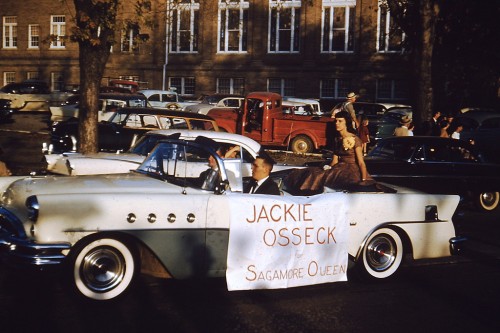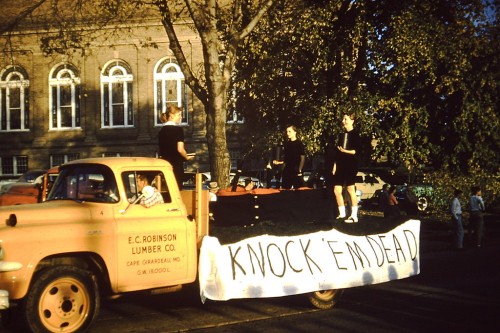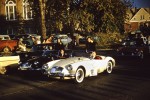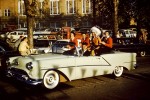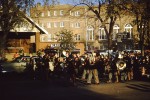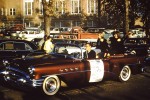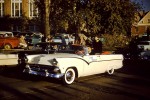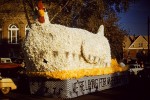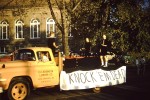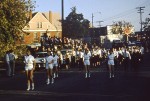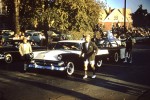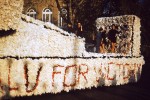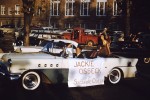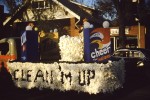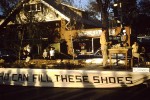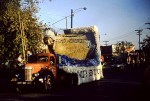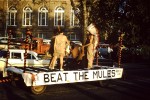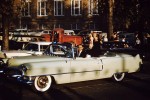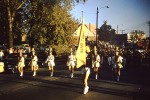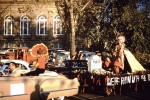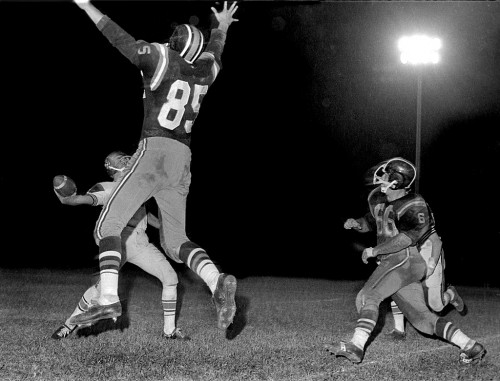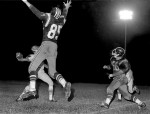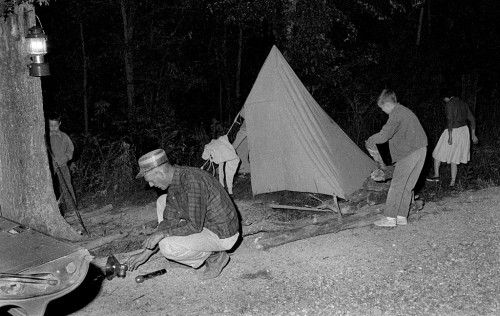 Here’s a shot of Dad helping set up a campsite. That’s Brother Mark hiding behind the tree. I’m pretty sure that’s Mother in the background looking for some poison ivy to step in. The setting is kind of odd: it’s right on a road and butts up to a fence. I don’t know who the boy on the right is. Brother David is in another shot, and that’s not him.
Here’s a shot of Dad helping set up a campsite. That’s Brother Mark hiding behind the tree. I’m pretty sure that’s Mother in the background looking for some poison ivy to step in. The setting is kind of odd: it’s right on a road and butts up to a fence. I don’t know who the boy on the right is. Brother David is in another shot, and that’s not him.
What caught my eye, though, was the lantern Dad is reaching for. It’s one of at least two carbide lanterns we owned. (Click on the photos to make them larger.)
What’s a carbide lantern?
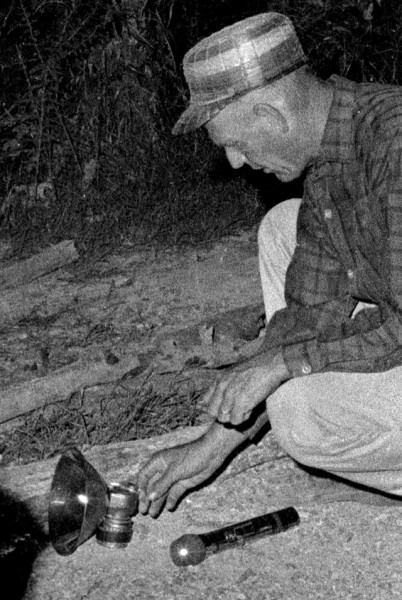 They were one of the most common sources of light for miners and coonhunters. There’s a good explanation of carbide lanterns on Mother Earth News.
They were one of the most common sources of light for miners and coonhunters. There’s a good explanation of carbide lanterns on Mother Earth News.
I’m pretty sure we bought the lanterns at Beard’s Sport Shop. They were simple devices. They consisted of a super-bright reflector attached to a device that contained two chambers. You put water in the top chamber and calcium carbide in the lower chamber. When you dripped water onto the carbide, it would emit acetylene gas – the same stuff you use mixed with oxygen for welding. A wheel flint, like on a cigarette lighter, would provide a spark to ignite the gas. No matches required.
Calcium carbide was available in just about any hardware store when I was a kid. We kept ours in a big glass jug with a wide mouth. It looked like gravel. In fact, we’d freak out new campers by putting some on the ground and pouring a little water on it. Casually pitching a match in the general direction of the brew, we’d warn them that you had to be careful where you built your fire because the gravel around there would burn. POOF! They’d spend an inordinate amount of time trying to light rocks until you clued them in.
The highly efficient reflectors would throw a beam a long way. If you cut back on the water drip, they’d burn for hours. The only catch was that they emitted a lot of soot that would clog the gas passage. They were great when they worked, but I always found them a pain to keep burning.
Carbide lanterns are hard to find these days. There was only one listing for carbide lanterns on Amazon. This caver site has some good information on how to buy a used lantern.
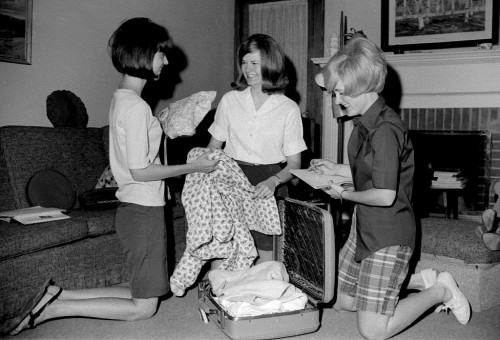 Pam Burkhimer, Sally Bierbaum and Gail Tibbles pose for a photo. I say pose because they were supposed to be packing for their Senior Girl Scout trip to New Orleans and there’s no way three members of the Class of ’66 could get all their stuff in one suitcase.
Pam Burkhimer, Sally Bierbaum and Gail Tibbles pose for a photo. I say pose because they were supposed to be packing for their Senior Girl Scout trip to New Orleans and there’s no way three members of the Class of ’66 could get all their stuff in one suitcase.
